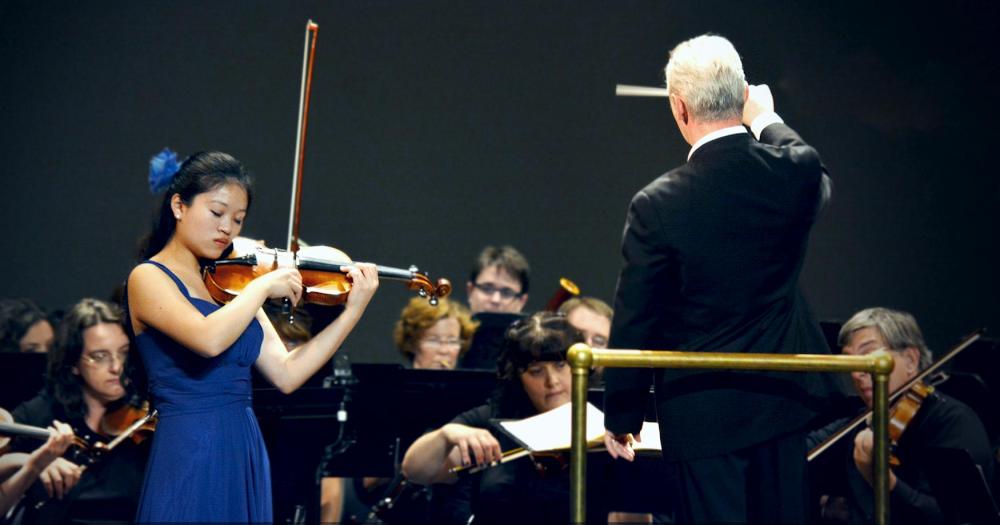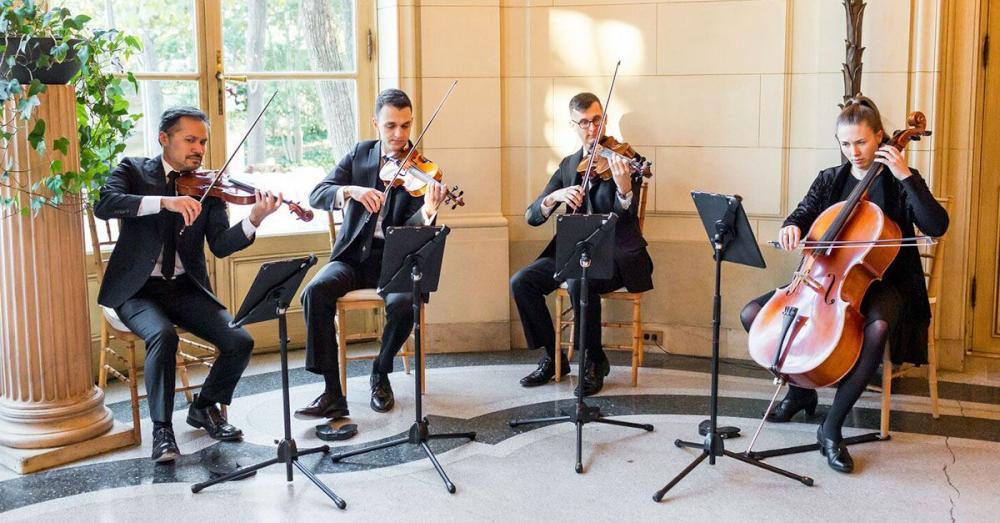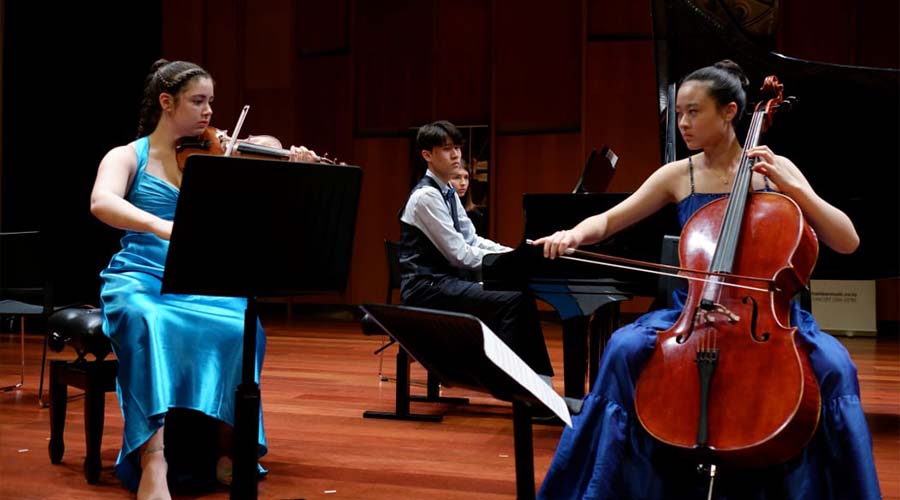Orchestra
Orchestras come in four basic types: the standard symphony orchestra (comprising large forces of strings, wind instruments, a brass section and percussion), the chamber orchestra (a scaled-down version of the above), the original instrument orchestra (using instruments of the period in which the composer was writing and the exact number envisaged by the composer), and the string orchestra (consisting of violins, violas cellos and double basses).
The orchestra has developed through the centuries usually by increasing the number of players and the term can also be applied to a large body of wind and brass instruments - the wind orchestra, which some would malign as being a glorified military band!
Conductor
Originally, the job of the present-day conductor was undertaken by either the leader of the orchestra (the principal violinist) or the harpsichordist. Concertos were conducted by the soloist in close liaison with the leader and there was never a need for an independent person to wave the baton.
However, as music became more complex it was necessary for someone to take control of the proceedings and direct both the rehearsals and the concert performance. There are more than a few orchestral players who might now try to persuade you that the role of the conductor was created when musicians spotted an opportunity of receiving higher fees and taking all the glory while not even having to play a single note, but there is only a small grain of truth in this!
The conductor of an orchestra has enormous power, for it is he or she who has control of the overall shape of the piece - the speed (or tempo) at which the piece should be played and the level of sound that each section of the orchestra should perform at. More importantly the conductor is responsible for inspiring the players to give their best. This is a rare and highly valued quality and is why top conductors receive very big fees compared to the players. As you can imagine, this is sometimes the basis for friction, but is usually kept in abeyance as conductors like to maintain as good a relationship with their players as possible.
Soloist
The soloist is the singer or instrumentalist taking the solo part in a work with orchestra. The term can sometimes also be applied to a duo; for example, where there is a violinist playing music for violin and piano, the pianist will often be labelled as the accompanist while the violonist is the soloist.
Soloists appear taking the solo part in works called concertos and are often outstandingly gifted performers. Necessary qualities include an extremely fine technique and unique creativity. They are quite often flamboyant characters and a strong personality is most definitely an advantage. Some of the famous soloists of the past few years include the singers Luciano Pavarotti, Kiri Te Kanawa, Placido Domingo and Jose Carreras, and instrumentalists Nigel Kennedy, Vladimir Ashkenazy and James Galway.
String Quartet
The string quartet consists of four people playing two violins, a viola and a cello. It was really established as a standard combination by the eighteenth century.
The standard structure for a string quartet as established in the Classical era is four movements, with the first movement in sonata form, allegro, in the tonic key; a slow movement in a related key and a minuet and trio follow; and the fourth movement is often in rondo form or sonata rondo form, in the tonic key.
Some of the finest works for the quartet were composed by Mozart, Haydn, Schubert and Beethoven, while more modern composers like Bartok and Shostakovich have also made exceptional contributions to the repertoire.
Piano Trio
Confusingly, a piano trio is not a piece for three pianos. The standard combination of a piano trio includes a violin and a cello with piano.
Works titled “Piano Trio” tend to be in the same overall shape as a sonata. Initially this was in the three movement form, though some of Haydn’s have two movements.
Again, Mozart, Haydn, Beethoven and Schubert were the ones who really provided the ‘standard’ repertoire. Other composers who have been inspired to write excellent works for this combination include Schumann, Brahms, Debussy and Ravel.
Chamber Music
Chamber music is the term given to ‘serious’ music two or more players up to the size of a smallish orchestra (of about fifteen players). There are a number of standard combinations that the mainstream classical composers wrote for, two of which, the string quartet and the piano trio, are described in more detail above.
The remaining combinations are: violin and piano duo, cello and piano duo, string trio (violin, viola and cello), string quintet (cas string quartet with either an added viola or cell), piano quintet (string quartet and piano), string sextet (two violins, two violas and two cellos) an wind quintet (flute, oboe, clarinet, horn and bassoon). In addition to these are other more diverse combinations for which various composers felt inspired to write.






